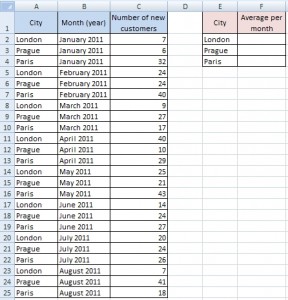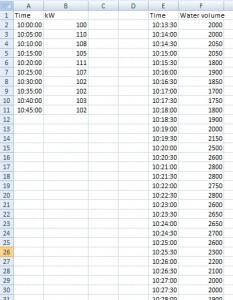Average with condition
There is a problem with average for some specific value in a table. Following table represents data of some worldwide company. You can see branch offices in the cities and number of their new customers per each month.
How to do average for specific items (London, Prague and Paris)? Continue reading “Average with condition” »






